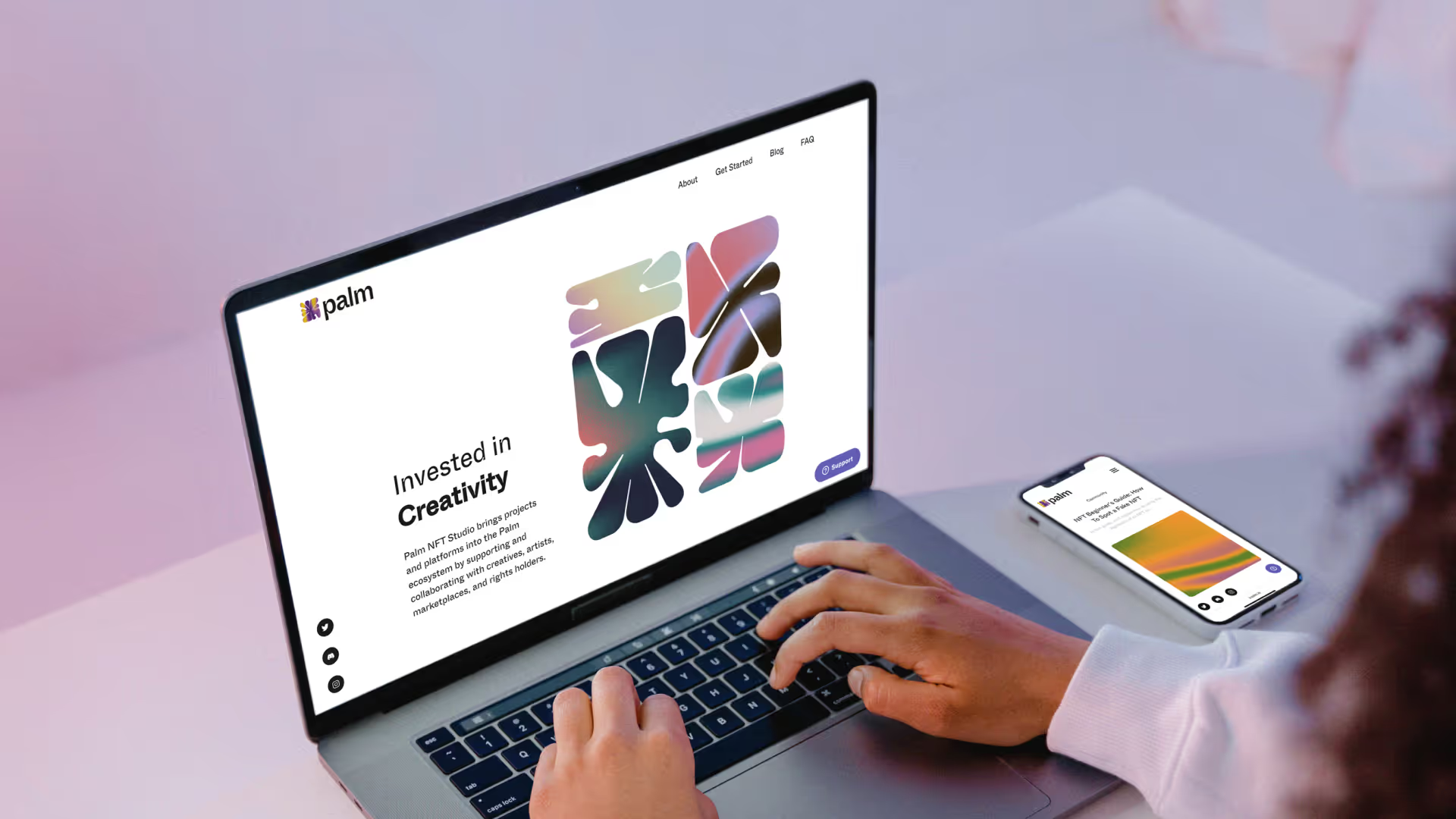Use these principles to build your career working with innovation-driven businesses as Silicon Valley designer
After spending a number of years in Silicon Valley, first in early-stage investing and then leading a brand strategy agency focused on startups; I’ve started noticing a pattern that unites designers and creatives who made it big in the world of fast-paced startup.
The core uniting principle of these people is the level of their involvement and enthusiasm within the company. Independently of their position, they are all active decision-makers influencing business growth; and well aware of operations and processes that go beyond the traditional “design” field.
A great Silicon Valley designer understands that it’s up to them to build a great company. And then to do great design for it.
Value diversity
Diversity is way more than a Silicon Valley buzzword. From a practical (not to mention moral) standpoint, diversity in design leads to better innovation; by increasing diversity of thought in the creative process, we are better able to solve problems. It’s that simple.
Taking into consideration a variety of opinions, paying attention to feedback from fringe users, and looking for opportunities to design for those who haven’t been served yet can take you far in your career, whether as part of a small startup or a big agency.
Joe Vasquez, Venture Partner at Revel Partners, mentions the following about his investment decision process: “A diverse team better represents a broader school of consumer. I can see that the company knows the value of going after a whole set of customers and not just one persona and understands how to connect with them.”
Be curious
Unlike most disciplines, design has a rapidly evolving canvas, especially in Silicon Valley. With new devices, new tools, new screens, and ever-updating frameworks; we have to figure out a lot of things on the go. Silicon Valley designer needs to have more than just artistic abilities to be successful; it goes far beyond programming as well. Think psychology, anthropology, statistics, economics, and business.
Chris Laughlin, a good friend and Design Lead for First Round Capital shared this insight that I find very spot-on: “When we hire someone that has a natural curiosity, which I believe most designers do, then they're going to find their way. The natural drive towards understanding the “why” behind the “what” is the hallmark of a great designer.”
Your curiosity drives everything else — unconventional solutions save the day.
Know the limitations
Leading a brand strategy agency in Silicon Valley taught me that at the end of the day; especially if you work with startups, it all comes down to tradeoffs — no matter what you do.
As the Founder of visualization software Stick, Alli McKee once told me, “finding what is good enough and how to you make up for any gaps is where you have to strike that balance in a startup. It’s the 80/20 rule that wins the day, not a 100.”
Perfectionism, that all us designers are so passionate about, will literally kill you in a startup. Balance becomes critical because you can’t push for the quality of Pentagram and BBDO in everything you do within a startup; these nascent companies do not have the runway, do not have the time, and often simply do not have enough people.
Think inside the box
Our partner, and outstanding marketing professional behind the rise of BitTorrent, Christian Averill is a big fan of a book “Inside the Box: A Proven System of Creativity for Breakthrough Results”, by Drew Boyd. Unlike the traditional “outside the box” attitude that relies on a breakthrough idea that can save a company from crisis, “inside the box” is a framework that systematizes creativity as part of the corporate culture, through creating new ideas independent of specific problems.
“Everything you do in your life, you put inside your own little box - there’s no such thing as ‘outside the box’. The more diverse experiences you have, the more things you put inside of your box, which will bring you inspiration and synthesis” - says Christian. Sometimes the creative process stops being creative. It turns into a mundane activity where even the most talented of us can lose sight of the exciting. As Silicon Valley designer working in the most fast-paced age we’ve ever lived in, you have to take care of your own creative self to keep that fire burning every day, not just on-demand.
Look at the big picture
My co-founder and our production lead Olga’s advice is the following: “No matter what you design, whether it’s brand identity, product design, a website or a pitch deck - don’t forget to think big picture. For example, a deck design is worth nothing if you fail to create a concise visual narrative that will support - not overshadow - the pitch. A brand identity is worth nothing if your client (or non-design team) doesn’t understand how to use that fancy brand book.”
It’s not a novel idea (sorry Olga), but in Silicon Valley, it matters like nowhere else; design is part of a complex ecosystem. It’s here to help sales, engineering, operations, and marketing; and it should be here to alleviate any communication challenges, not to create more.
There are things that never change; no matter how far humanity has gone; no matter how digital diverse or “smart” we’ve become. Every client is still always late, always out of budget; still a better designer than you; always with a 1000 additional requests and little to no understanding of what it takes to implement the idea.
It’s all good — these challenges come with the territory. It’s our duty to educate, empathize and offer solutions, as it’s always been. The rest can become a few great memes, as they often do.
For women-designers willing to break into tech industry, we've assembled this list of tips from women creative leaders in Silicon Valley.
Use these principles to build your career working with innovation-driven businesses as Silicon Valley designer
After spending a number of years in Silicon Valley, first in early-stage investing and then leading a brand strategy agency focused on startups; I’ve started noticing a pattern that unites designers and creatives who made it big in the world of fast-paced startup.
The core uniting principle of these people is the level of their involvement and enthusiasm within the company. Independently of their position, they are all active decision-makers influencing business growth; and well aware of operations and processes that go beyond the traditional “design” field.
A great Silicon Valley designer understands that it’s up to them to build a great company. And then to do great design for it.
Value diversity
Diversity is way more than a Silicon Valley buzzword. From a practical (not to mention moral) standpoint, diversity in design leads to better innovation; by increasing diversity of thought in the creative process, we are better able to solve problems. It’s that simple.
Taking into consideration a variety of opinions, paying attention to feedback from fringe users, and looking for opportunities to design for those who haven’t been served yet can take you far in your career, whether as part of a small startup or a big agency.
Joe Vasquez, Venture Partner at Revel Partners, mentions the following about his investment decision process: “A diverse team better represents a broader school of consumer. I can see that the company knows the value of going after a whole set of customers and not just one persona and understands how to connect with them.”
Be curious
Unlike most disciplines, design has a rapidly evolving canvas, especially in Silicon Valley. With new devices, new tools, new screens, and ever-updating frameworks; we have to figure out a lot of things on the go. Silicon Valley designer needs to have more than just artistic abilities to be successful; it goes far beyond programming as well. Think psychology, anthropology, statistics, economics, and business.
Chris Laughlin, a good friend and Design Lead for First Round Capital shared this insight that I find very spot-on: “When we hire someone that has a natural curiosity, which I believe most designers do, then they're going to find their way. The natural drive towards understanding the “why” behind the “what” is the hallmark of a great designer.”
Your curiosity drives everything else — unconventional solutions save the day.
Know the limitations
Leading a brand strategy agency in Silicon Valley taught me that at the end of the day; especially if you work with startups, it all comes down to tradeoffs — no matter what you do.
As the Founder of visualization software Stick, Alli McKee once told me, “finding what is good enough and how to you make up for any gaps is where you have to strike that balance in a startup. It’s the 80/20 rule that wins the day, not a 100.”
Perfectionism, that all us designers are so passionate about, will literally kill you in a startup. Balance becomes critical because you can’t push for the quality of Pentagram and BBDO in everything you do within a startup; these nascent companies do not have the runway, do not have the time, and often simply do not have enough people.
Think inside the box
Our partner, and outstanding marketing professional behind the rise of BitTorrent, Christian Averill is a big fan of a book “Inside the Box: A Proven System of Creativity for Breakthrough Results”, by Drew Boyd. Unlike the traditional “outside the box” attitude that relies on a breakthrough idea that can save a company from crisis, “inside the box” is a framework that systematizes creativity as part of the corporate culture, through creating new ideas independent of specific problems.
“Everything you do in your life, you put inside your own little box - there’s no such thing as ‘outside the box’. The more diverse experiences you have, the more things you put inside of your box, which will bring you inspiration and synthesis” - says Christian. Sometimes the creative process stops being creative. It turns into a mundane activity where even the most talented of us can lose sight of the exciting. As Silicon Valley designer working in the most fast-paced age we’ve ever lived in, you have to take care of your own creative self to keep that fire burning every day, not just on-demand.
Look at the big picture
My co-founder and our production lead Olga’s advice is the following: “No matter what you design, whether it’s brand identity, product design, a website or a pitch deck - don’t forget to think big picture. For example, a deck design is worth nothing if you fail to create a concise visual narrative that will support - not overshadow - the pitch. A brand identity is worth nothing if your client (or non-design team) doesn’t understand how to use that fancy brand book.”
It’s not a novel idea (sorry Olga), but in Silicon Valley, it matters like nowhere else; design is part of a complex ecosystem. It’s here to help sales, engineering, operations, and marketing; and it should be here to alleviate any communication challenges, not to create more.
There are things that never change; no matter how far humanity has gone; no matter how digital diverse or “smart” we’ve become. Every client is still always late, always out of budget; still a better designer than you; always with a 1000 additional requests and little to no understanding of what it takes to implement the idea.
It’s all good — these challenges come with the territory. It’s our duty to educate, empathize and offer solutions, as it’s always been. The rest can become a few great memes, as they often do.
For women-designers willing to break into tech industry, we've assembled this list of tips from women creative leaders in Silicon Valley.



.svg)

.avif)
.avif)
.svg)